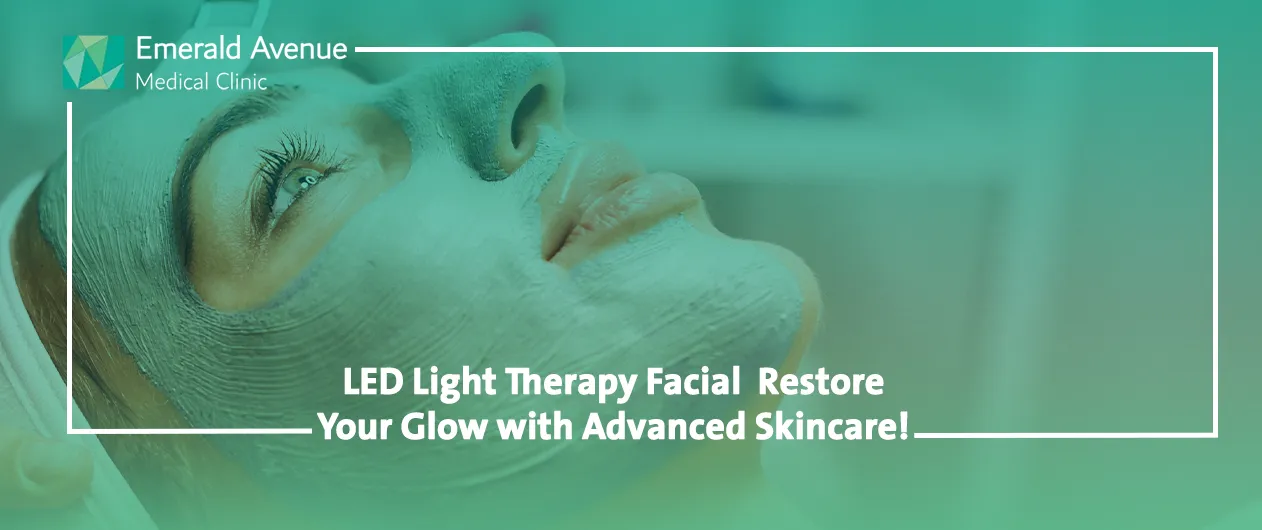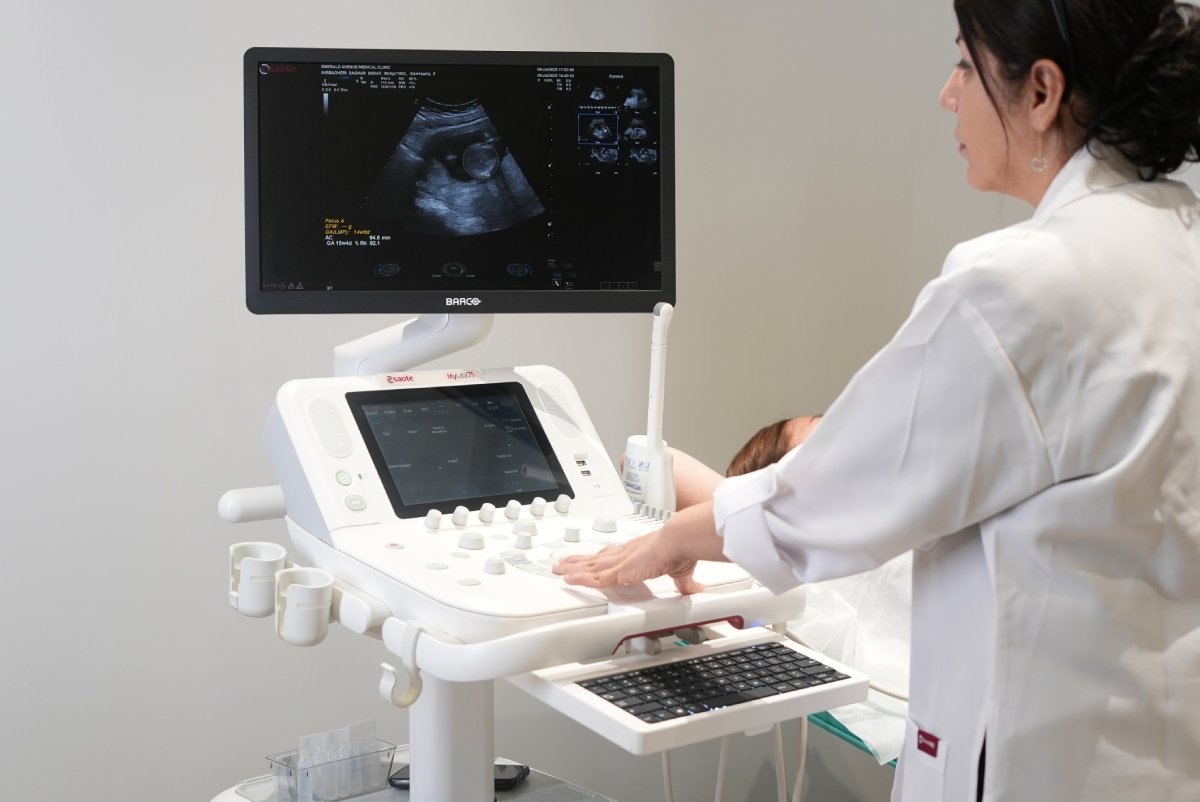Imagine your skin cells, particularly the mitochondria, as tiny power plants. Just as solar panels convert sunlight into energy, certain wavelengths of light can be absorbed by our cells to kick-start critical repair and rejuvenation processes. An LED light therapy facial uses specific, clinically proven wavelengths of light to penetrate the skin at varying depths, triggering natural intracellular reactions.
This article will serve as your clinical guide to understanding how this remarkable technology works, its benefits, and what you can expect from a professional LED light therapy facial.
What is the LED Light Therapy Facial? Understanding the Different Wavelengths and Their Benefits
An LED light therapy facial utilizes light-emitting diodes (LEDs) to deliver concentrated wavelengths of non-thermal (heat-free) light energy directly to the skin’s cells.
Unlike lasers, which use heat to target tissues, LED therapy is a gentle, atraumatic process that stimulates cellular function. The key to its versatility lies in the different colors, or wavelengths, each targeting a specific chromophore (a light-absorbing molecule) within the skin to achieve a distinct clinical outcome.
Red Light Therapy: Anti-Aging & Collagen Boost
Red light therapy commonly uses wavelengths between 630 and 660 nanometers (nm), which are optimal for targeting skin tissues involved in collagen synthesis.
Mechanism of Action:
At these wavelengths, red light reaches the dermal layer of the skin, where fibroblast cells are located. The light energy is absorbed by cytochrome c oxidase, an enzyme within the mitochondria, which enhances the production of adenosine triphosphate (ATP), the cell’s main energy source.
This energy increase promotes cellular repair, protein synthesis, and tissue regeneration.
Clinical Outcomes:
Regular exposure to red light therapy has been associated with improvements in fine lines, skin texture, and elasticity, as well as accelerated wound healing. In professional skincare, red light is often included as part of comprehensive rejuvenation protocols aimed at supporting healthy skin aging.
Blue Light Therapy: Acne Treatment & Bacteria Reduction
Blue light therapy typically operates at a wavelength of around 415 nanometers (nm), which is optimal for reaching the epidermal layer of the skin.
Mechanism of Action:
Because blue light penetrates only the uppermost layers of the skin, it is particularly effective against sebaceous glands and surface-level microorganisms. Its primary target is porphyrins, naturally occurring, light-sensitive molecules produced by Cutibacterium acnes (formerly Propionibacterium acnes).
When these molecules absorb blue light, they undergo a photochemical reaction that generates reactive oxygen species, which in turn destroy the bacterial cells responsible for acne development.
Clinical Outcomes:
Consistent application of LED light therapy facial has been shown to reduce inflammatory acne lesions, diminish active breakouts, and help balance sebum activity, leading to a clearer and calmer complexion over time.
Green Light Therapy: Pigmentation & Calming
Green light therapy typically uses wavelengths of approximately 525 nanometers (nm), a range that interacts effectively with the epidermal and upper dermal layers of the skin.
Mechanism of Action:
This wavelength primarily influences melanocytes, the pigment-producing cells located in the basal layer of the epidermis. Exposure to green light is believed to modulate melanin synthesis, slowing excessive pigment formation and dispersing existing clusters.
By reducing the transfer of melanin to surface cells, it promotes a more balanced and even skin tone.
Clinical Outcomes:
When used regularly, LED green light therapy may assist in reducing hyperpigmentation, sun-induced discoloration, and post-inflammatory pigmentation (PIH). Over time, this can contribute to a brighter and more uniform complexion with improved overall clarity.
Yellow Light Therapy: Redness & Circulation
Yellow light therapy typically operates at around 590 nanometers (nm), reaching a depth in the skin that effectively influences the circulatory and lymphatic systems.
Mechanism of Action:
At this wavelength, yellow light can stimulate lymphatic flow and enhance microcirculation, improving the transport of oxygen and essential nutrients to skin cells. This process also aids in the removal of metabolic waste products, helping to maintain a healthier cellular environment and reduce skin congestion.
Clinical Outcomes:
Consistent application of LED yellow light therapy is especially beneficial for sensitive, reactive, or rosacea-prone skin. It may help diminish visible redness, soothe irritation, and promote a calmer, more even complexion over time.
The Benefits of LED Light Therapy for Your Skin
The clinical applications of a well-administered LED light therapy facial are extensive. Here are the primary evidence-based benefits we observe in our patients.
Stimulating Collagen Production
- As detailed above, red light therapy is a potent stimulator of fibroblast activity.
- This leads to a denser, more organized collagen and elastin matrix.
- The result is a tangible improvement in skin texture, firmness, and a reduction in the appearance of fine lines over a series of treatments.
Reducing Inflammation and Redness
- Both red and yellow wavelengths have demonstrated significant anti-inflammatory properties.
- They work by down-regulating pro-inflammatory cytokines and improving circulation, which helps to calm conditions like rosacea, eczema, and general skin sensitivity.
- An LED light therapy facial is an excellent post-procedure treatment to minimize downtime and redness after more invasive treatments like microneedling or chemical peels.
Treating Acne and Blemishes
- Blue light’s antibacterial action directly addresses one of the primary culprits of acne.
- When combined with red light in a single LED light therapy facial session, the benefits are synergistic: blue light kills the bacteria while red light reduces the associated inflammation and promotes healing, minimizing the risk of scarring.
Improving Skin Tone and Texture
- By addressing pigmentation with green light and promoting cellular repair with red light, the overall complexion becomes brighter and more even.
- Increased ATP production supports healthier cellular turnover, leading to smoother, more refined skin texture.
Experience LED Light Therapy at Emerald Avenue Medical Centre: What to Expect
A medical-grade LED light therapy facial is a precise, relaxing procedure.
- Consultation: Every treatment begins with a thorough skin analysis to determine the most appropriate light protocol for your specific concerns.
- Preparation: Your skin will be double-cleansed to remove any makeup, oils, or sunscreens that could block light penetration.
- Treatment: Protective eyewear is placed over your eyes. The LED device is positioned over your face for approximately 15 to 20 minutes. You will experience a gentle, warming sensation but no pain.
- Completion: Following the light exposure, we apply targeted serums (like hyaluronic acid or vitamin C) and a broad-spectrum SPF to protect your newly energized skin.
Is LED Light Therapy Right for You? Expert Consultation in Dubai
The excellent safety profile of the LED light therapy facial makes it suitable for nearly all skin types and tones.
- Ideal Candidates: Individuals with mild-to-moderate acne, early signs of aging, rosacea, hyperpigmentation, or those simply seeking a general improvement in skin health are excellent candidates.
Combining LED Therapy with Other Treatments for Enhanced Results
The LED light therapy facial is rarely a standalone treatment; its true power is often unlocked as part of a comprehensive, synergistic plan.
- Post-Microneedling: Using red light immediately after a microneedling session dramatically reduces redness and inflammation, accelerating the healing process.
- With Hydrafacials: Performing an LED light therapy facial after a Hydrafacial allows the freshly exfoliated and hydrated skin to absorb the light energy more effectively.
- Post-Peel: Calming red or yellow light can soothe the skin after a light chemical peel, minimizing irritation and promoting recovery.
Conclusion: Harness the Healing Power of Light for Your Skin
The LED light therapy facial represents a clear example of how modern aesthetic science can activate the body’s natural regenerative pathways. This evidence-supported approach works at the cellular and molecular levels, promoting gradual yet sustainable improvements in overall skin function and appearance.
When performed using clinically validated equipment under the guidance of a qualified practitioner who understands the mechanisms of photobiomodulation, this therapy offers a safe and scientifically grounded method for enhancing skin vitality.
Ultimately, it demonstrates that the ability to restore and rejuvenate the skin can be achieved through the precise and therapeutic use of light.
Discover our advanced Dermatology Services at Emerald Avenue Medical Clinic, Dubai, and experience skincare on a higher level.
FAQ
Is LED light therapy safe for all skin types?
Yes, an LED light therapy facial is considered safe for all skin types, as it does not use UV light or heat that could trigger post-inflammatory hyperpigmentation.
Does LED light therapy cause any pain or discomfort?
No. The treatment is completely painless and non-invasive. Most patients report a gentle, pleasant warmth and find the experience relaxing.
How many LED facial sessions are needed to see results?
Results are cumulative. While some calming effects can be noticed after one session, a typical protocol involves an initial series of 6-8 sessions, spaced 1-2 times per week. Maintenance sessions are then recommended monthly.
What is the downtime after an LED light therapy facial?
There is absolutely no downtime. You can immediately return to your daily activities after your LED light therapy facial, making it a true “lunchtime” procedure.
Can LED light therapy be combined with other facial treatments?
Absolutely. In fact, it is highly recommended. The LED light therapy facial enhances the results of many other treatments, such as facials, microneedling, and chemical peels, by reducing inflammation and accelerating healing.
What types of LED devices does Emerald Avenue Medical Centre use for facial treatments?
We use only medical-grade, CE-marked, and clinically-proven LED devices. These systems deliver the precise wavelengths and energy output required for effective photobiomodulation, a standard that at-home devices cannot meet.




